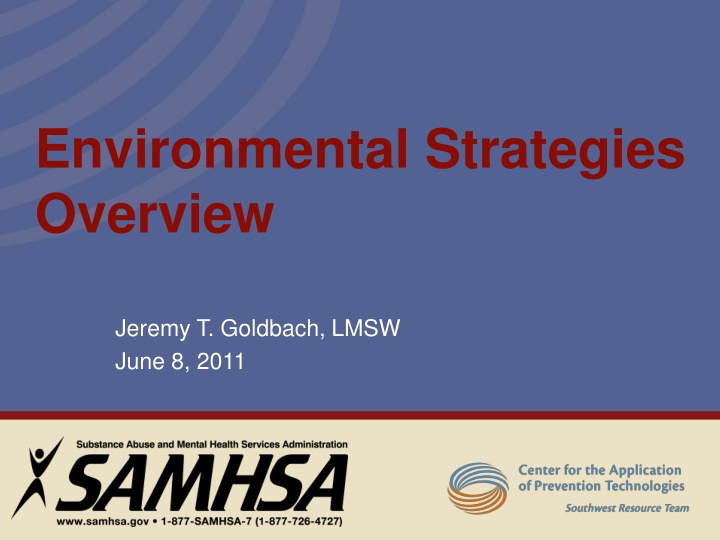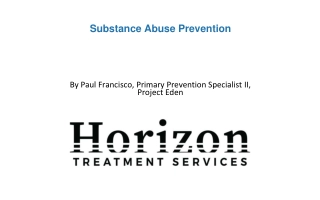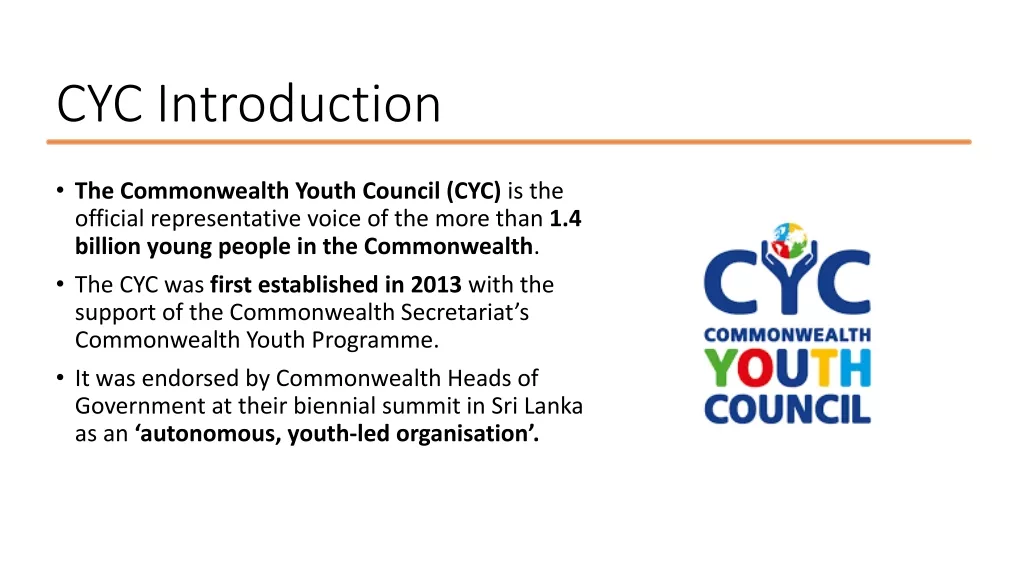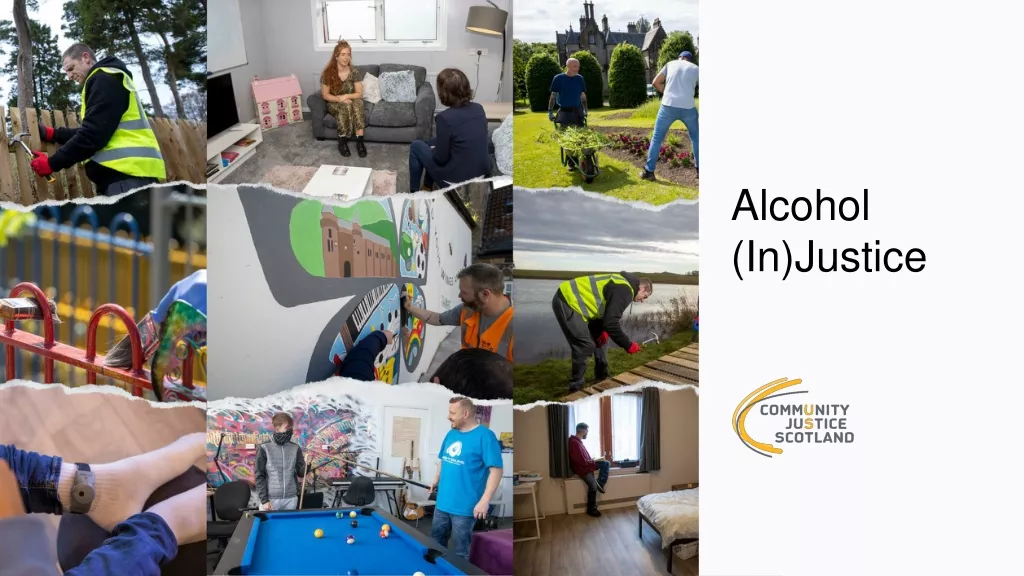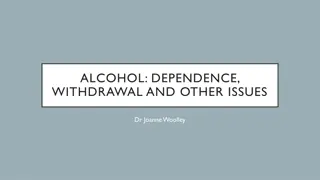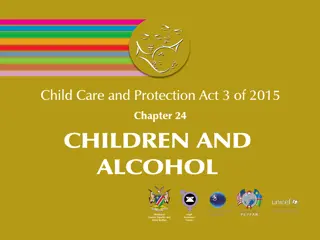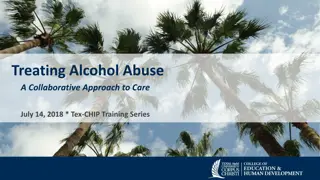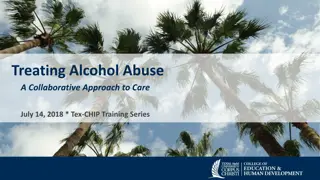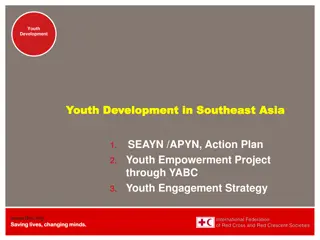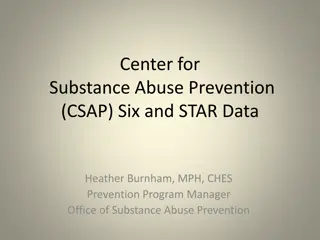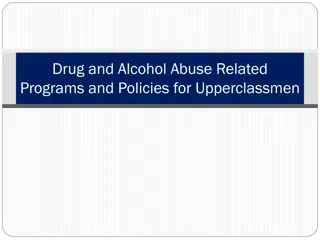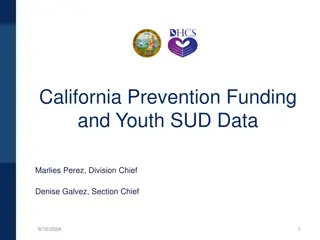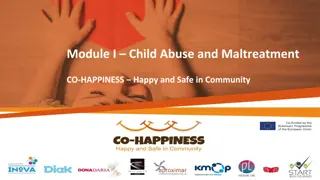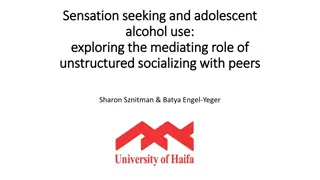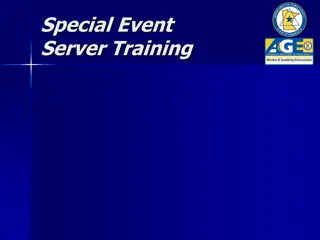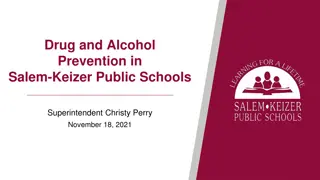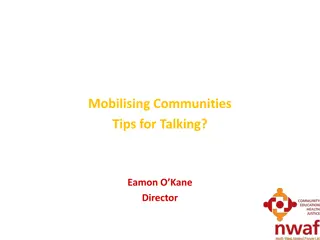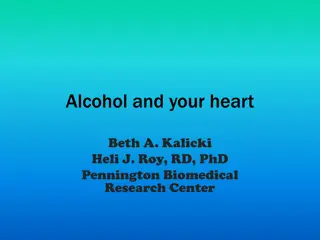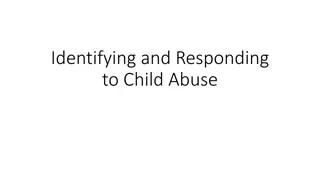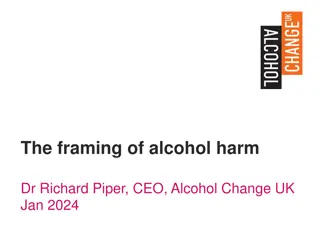Environmental Strategies for Youth Alcohol Abuse Prevention
This workshop overview by Jeremy T. Goldbach, LMSW, on environmental strategies for preventing youth alcohol abuse delves into defining such strategies, utilizing the Strategic Prevention Framework (SPF) for selection, and identifying suitable strategies for communities. The content emphasizes the significant levels of alcohol and drug use among American youth, highlighting the alarming rates of binge drinking and the substantial economic costs associated with alcohol-related consequences. Through this workshop, participants aim to build awareness and capabilities in implementing effective environmental strategies to combat youth alcohol abuse.
Download Presentation

Please find below an Image/Link to download the presentation.
The content on the website is provided AS IS for your information and personal use only. It may not be sold, licensed, or shared on other websites without obtaining consent from the author.If you encounter any issues during the download, it is possible that the publisher has removed the file from their server.
You are allowed to download the files provided on this website for personal or commercial use, subject to the condition that they are used lawfully. All files are the property of their respective owners.
The content on the website is provided AS IS for your information and personal use only. It may not be sold, licensed, or shared on other websites without obtaining consent from the author.
E N D
Presentation Transcript
Environmental Strategies Overview Jeremy T. Goldbach, LMSW June 8, 2011
Learning Objectives After participation in this workshop, participants will be able to : 1. Define environmental strategies 2. Describe how to use the Strategic Prevention Framework (SPF) to select appropriate environmental strategies 3. Identify environmental strategies that may be a good fit in their own communities
So Why Environmental Strategies? A significant portion of youth in the United States (age 12 to 17) have used alcohol and other drugs. Rates of binge drinking (five or more drinks) in underage youth is a concern, with large increases between 7thgrade (1.6% of 12 and 13 year olds) and high school graduation (34.7% of 18 to 20 year olds). Economically, the costs of alcohol use and its related consequences in U.S. communities add up to more than $235 billion annually (Rehm, et al, 2009). (NSDUH, 2009; Rehm et al. 2009)
Continued Addressing alcohol abuse through only one strategy (such as a single direct service prevention intervention only) is less effective than taking a broader approach that includes the larger community. multi-component strategies promote a systemic approach to solving issues recognizing that individuals operate within, and are affected by, an environment . (Hawley, 1950; Rousseau & House, 1994; Stokols, 1996).
Breaking it Down What are Environmental Strategies? Making flowers bloom? Ending Wars? Getting rid of pollution? NO well, not for us anyway!
Environmental Strategies Technically speaking Strategies that address policies, norms, expectations, regulations and enforcement within a shared environment with others in a community. Such strategies tend to: have greater reach (affecting more individuals) and less strength (intensity per individual); (2) be longer in duration; and (3) show more rapid results. quoted from the 2004 RAND Getting to Outcomes.
Team Work! Discuss successes you ve had in using environmental strategies Discuss barriers/struggles in using environmental strategies Draft a working definition of environmental strategies
Environmental Strategies Less technically speaking: Are policies and practices (customs, habits, etc) that change the context & norms where we live and work, and limits access to a substance, and can prevent harmful behaviors.
Environmental Strategies Environmental Strategies focus on the following 4 areas: Access & Availability; Policy & its Enforcement; Community Norms; and Media Messages.
Environmental Factors Policies/Regulations/Laws Availability Norms Adapted from: http://captus.samhsa.gov/southwest/resources/documents/envchangetheory.pdf
Policies/Regulations/Laws They control availability, support norms, and specify sanctions for violations
Availability Is the amount of time, energy, and money that must be expended to obtain a substance (alcohol, tobacco, drugs). The more resources (harder) it takes to get the substance the less availability (access).
Norms The rightness or wrongness, the acceptability or unacceptability, and/or deviance of specific behaviors for a specific group of individuals
But how do we know what to do? The Strategic Prevention Framework (SPF) SAMHSA/CSAP Supported Based on a Public Health Approach Cholera John Snow An iterative process designed to reduce of the negative consequences of substance abuse problem A framework that identifies the major needs and then selects a strategy to target these needs
The SPF Framework Assessment Profile population needs, resources, and readiness to address needs and gaps Evaluation Capacity Monitor, evaluate, sustain, and improve or replace those that fail Mobilize and/or build capacity to address needs Sustainability & Cultural Competence Implement evidence-based prevention programs and activities Develop a Comprehensive Strategic Plan Implementation Planning
Why Use the SPF? Effective capacity building process Required by SAMHSA and used by many others Gives a roadmap based on research, data, and evidence Decisions can be evaluated through data-driven measurement
Step 1: Needs Assessments Why do we assess? To guide the prevention effort To provide information about the target population and their corresponding substance abuse problem
Intervening Variables The But Why Here? Retail Access? Low Enforcement? Social Access? Perceived Risk? Social Norms? Alcohol Promotion? Pricing?
Step 1: Outputs Milestones Products Epidemiological Workgroup forms, and begins to collect and analyze data Data Report with clear, concise data-driven problem statement Identification of target area and population Assessment of readiness and barriers to success Data sources for ongoing assessment Gap analysis
Step 2: Capacity Building To find out what we already have and what we need Different types of capacity (fiscal, physical, staff, etc) - So we don t duplicate efforts or pick much-needed but unachievable strategies
Step 2: Outputs Milestones Products Creation of partnerships Capacity Report with quarterly updates Directory of key stakeholders, leaders, and service providers Training and Technical Assistance (T/A) provided in targeted areas Meetings w/ key stakeholders Memorandums of Understanding (MOU) w/ stakeholders
Step 3: Planning What kind of planning is done? Identifying the most powerful factors (intervening variables) contributing to the target behavior Investigating appropriate evidence-based strategies to match population s needs Planning expected outcomes (both short and long-term)
Step 3: Outputs Milestones Products Writing goals, objectives, and performance targets Drafting Strategic Plan Logic Model Preliminary Action Plan Creation of Evaluation Plan Evaluation Plan
Step 4: Implementation What do we do? Develop Action Plan for implementing the Strategic Plan Take Fidelity of Implementation into account Write detailed Evaluation Plan that includes process and outcome measurements
Step 4: Outputs Milestones Products Developing and implementing Action Plan Action Plan Gathering information about EBIs (evidence-based interventions) Identification and selection of EBIs Creating Evaluation Plan and measures Evaluation Plan and Performance Measures
Step 5: Evaluate What do we evaluate? The effectiveness of the selected evidence-based program, policy, or practice (EBP) How? By collecting required outcome data Recommendations made for quality improvement
Step 5: Outputs Milestones Collaboration with Evaluation team Products Data collection and review of EBP effectiveness Recommendations for Quality Improvement Evaluation Report Quality Improvement recommendations
Sustainability and Cultural Competence What are we sustaining, the prevention programs or the prevention effort? Why is cultural competence important? How do we create prevention systems with culturally responsive behaviors, attitudes, and practices?
Break Out! As a group, read the case study Complete the Logic Model sections: Problem But Why? (Intervening variables) But Why Here? (description) Strategies STOP at Activities
Types of Environmental Strategies What are the 5 types (broad categories) of Environmental Strategies? Policy Enforcement Education Communication Collaborations Adapted from http://captus.samhsa.gov/northeast/resources/prevention_materials/strengthening_families.cfm#c ollaboration
Policy Examples minimum age to buy taxes underage drinking laws driving while intoxicated (DWI) laws restrictions on advertising and billboard placement restrictions on smoking in public places or private entities open container laws limits on the location, density, and hours of operation of liquor stores rules governing the use and placement of cigarette vending machines
Enforcement Policies without enforcement = no change Sobriety checkpoints Compliance checks Steps detailed in policy for non-compliance Publicize laws and penalties Increase building inspections Post signs to notify about surveillance (in stores on roadways, etc) Citizen patrols
Education Need to educate people on policies, penalties, proper procedures Retail seller trainings owners, managers, cashiers. (off premise) Retail server trainings bartenders, wait staff, owners. (on premise) Curriculum targeting entire populations. Education also occurs under communications, see later slide.
Communication Social Marketing Media Advocacy Counter-marketing Media Literacy Social Norms Campaigns
